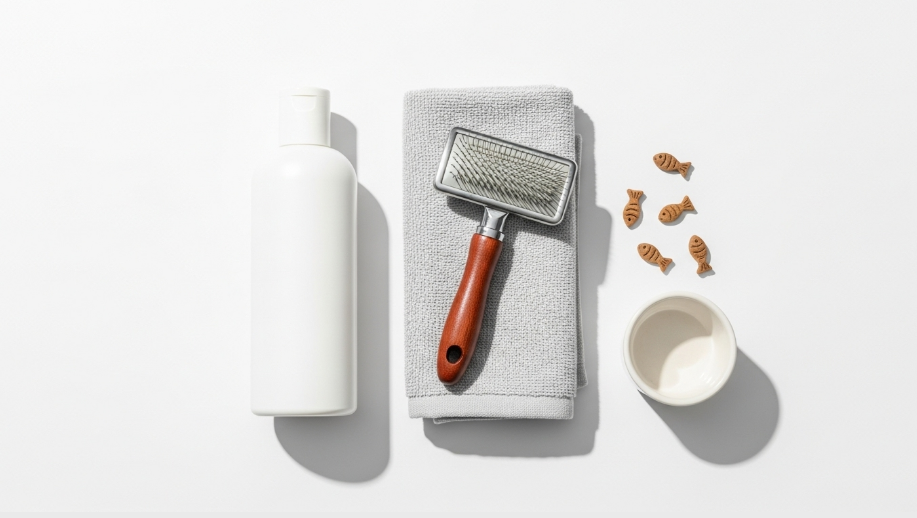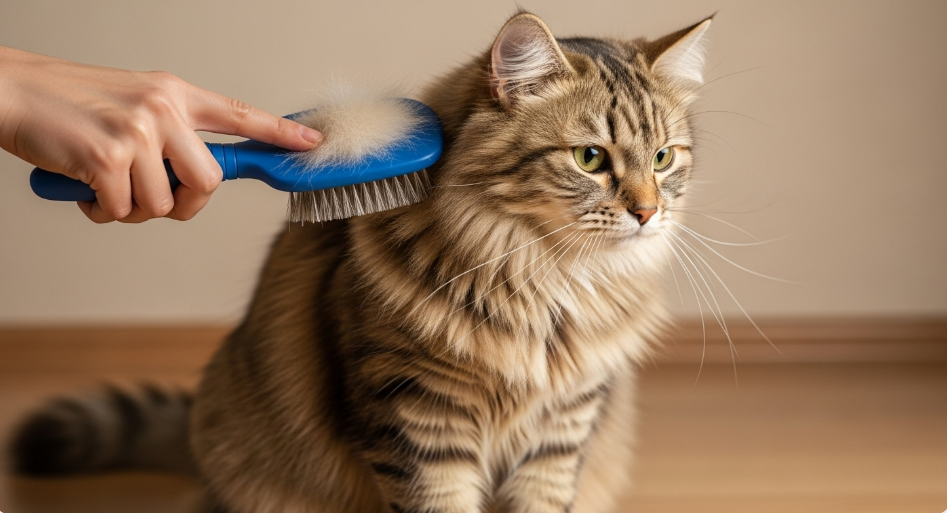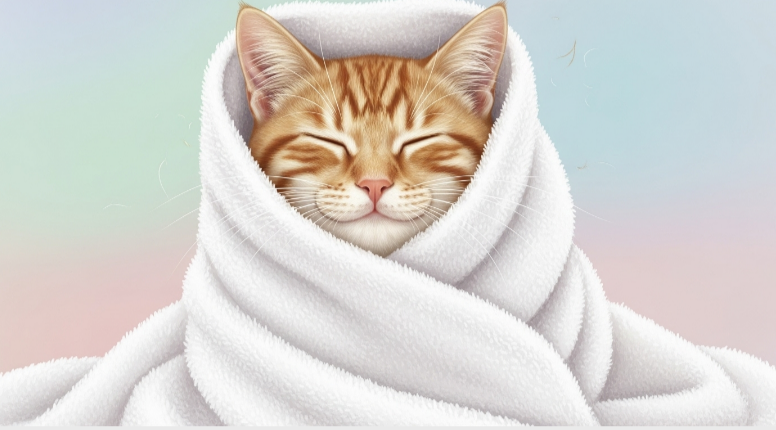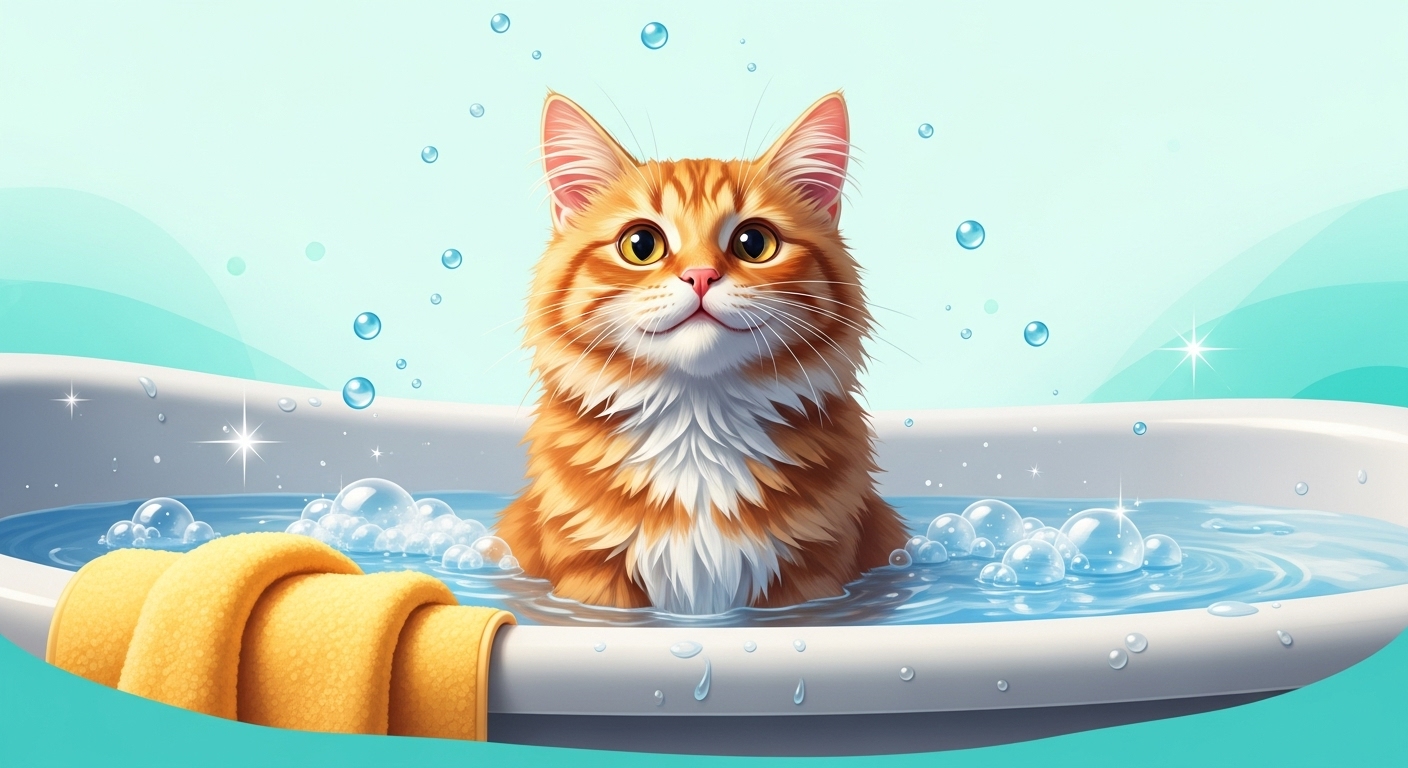Learn step-by-step how to bathe your cat at home, including supplies, tips for cats that hate water, and when baths are necessary. Keep your feline clean and happy.
Do Cats Need Baths?
Cats groom themselves well. They use their tongues to clean fur. Most cats stay clean without help. Baths are rare for healthy cats.
Some cats need baths. This happens if they get dirty. Or if they roll in something sticky. Older cats may not groom well. Cats with arthritis struggle to reach spots. Fat cats have trouble too. Hairless cats like Sphynx need baths often. They build up oil on skin.
Baths help with skin issues. Fleas or ringworm require medicated washes. Always check with a vet first. They suggest the right shampoo.
If your cat kneads a lot, it shows comfort. Baths can make them feel better after. Link to more on cat behavior: Why Do Cats Knead?
Supplies You Need
Gather items before you start. This keeps things smooth.
- Cat shampoo: Use one made for cats. Human shampoo hurts their skin.
- Towels: Soft and large. One for drying. One for the floor.
- Non-slip mat: Place in sink or tub. Stops slipping.
- Cup or sprayer: For gentle rinsing.
- Brush: For before and after.
- Treats: To reward good behavior.
- Cotton balls: For ears.

Prepare Your Cat
Start slow. Cats often fear water. Build trust over time.
Trim nails a day before. This cuts scratch risk. Brush fur to remove mats. Mats get worse when wet.
Play with your cat first. Tire them out. A calm cat fights less.
Close the bathroom door. Keep it warm. No drafts.
For cats that hate water, use a harness. It holds them safe. Or get a helper.

Step-by-Step Guide to Bathing
Follow these steps. Go slow. Stay calm.
Step 1: Fill the Sink or Tub
Use a sink for small cats. Add 4 inches of warm water. Test with your elbow. It should feel like baby bath water.
Place non-slip mat inside.
Step 2: Place Your Cat In
Hold by the scruff gently. Lower them in. Let them stand on back legs. Hold front paws on edge.
Talk soft. Give praise.
Step 3: Wet the Fur
Use cup or sprayer. Wet from neck down. Avoid face and ears.
Put cotton balls in ears first. This keeps water out.
Step 4: Apply Shampoo
Pour shampoo on back. Lather gently. Work into fur. Skip eyes and mouth.
For dirty cats, shampoo twice. Rinse well each time.
Use medicated if vet says so. For fleas, ask vet for advice.
Step 5: Rinse Well
Rinse until water runs clear. Soap left on causes itch.
Check under legs and belly.
Step 6: Dry Your Cat
Wrap in towel. Pat dry. No rubbing for long fur. It tangles.
If they allow, use dryer on low cool. Keep far. Brush as you dry.
Keep cat inside until fully dry. Wet fur chills them.

Tips for a Stress-Free Bath
Use treats during. Reward calm moments.
Start young if possible. Kittens learn faster.
If cat panics, stop. Try again later. Or see a pro groomer.
For water haters, wipe with damp cloth first. Build up to full bath.
Pheromone sprays calm some cats. Buy at pet stores.
After the Bath
Brush fur again. Check for missed spots.
Watch for skin issues. Redness means see vet.
Give extra love. Play or cuddle.
If your cat eats odd things, baths help if they get messy. Related: Can Cats Eat Bananas?
How Often to Bathe Your Cat
Most cats: Every 4-6 weeks at most. Or only when needed.
Hairless: Weekly to remove oil.
Long hair: Every month to stop mats.
Indoor cats: Rarely. Unless dirty.
Ask vet for your cat’s needs. Over-bathing dries skin.
Common Questions
Is it cruel to bathe cats? No. If done right, it’s helpful. Force makes stress.
Can baths help allergies? Yes. They cut dander. But not cure.
What if my cat has fleas? Use flea shampoo. Vet approved.
How to bathe kittens? Wait until 2 months. Be extra gentle.
Do baths stop shedding? Brushing helps more. Baths remove loose fur.

